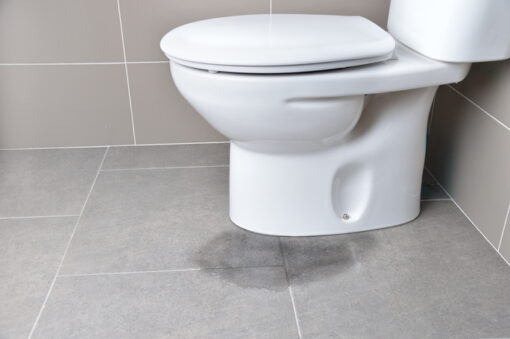It’s like something out of a nightmare or a movie. You flush your toilet – like you have hundreds of times before – but the bowl soon fills with water instead of emptying everything down the drain. The water quickly overflows the rim and onto the floor. Help! What is causing my toilet to overflow?
Don’t worry, we’re here to assist you! Turn off the water first. Your toilet’s water supply knob should be on the wall behind it. Hopefully, this will stop the unwelcome torrent from streaming over your bathroom floor. Now it’s time to figure out what’s causing your toilet to overflow and how to fix it.
If you try these steps and they do not work, or if you’d rather leave it to the professionals from the get go, contact Preferred Plumbing and Rooter Service at (877) 298-8105 for help with your overflowing toilet.
How to Clear a Clogged Toilet with a Plunger
The most common cause of overflowing toilet bowls is a toilet blockage. It’s possible that the blockage is caused by garbage, toilet paper, or something else you flushed. The fastest and simplest technique to unclog a blocked toilet is to use a plunger. A flange plunger, if you have one, works best on a toilet drain. The plungers with the rubber flap that protrudes from the cup are these. It enables a more secure seal.
Place the rubber flap in your toilet’s drain opening and the cup snugly around the exterior. With each dive, you should feel the water moving if you’ve formed a good seal. Plunge up and down for around 20 seconds. The blockage is moving if you hear water gurgling thereafter. If not, continue the plunging technique until you are able to flush your toilet properly.
How to Clear a Clogged Toilet with an Auger
A toilet auger is your best choice if you have a persistent blockage that won’t move with the plunger. An auger, often known as a “snake,” is a long metal coil that goes down the toilet drain. The auger goes through the pipes to the blockage site as it uncoils. By moving the auger, you should be able to dislodge the blockage.
Slowly and steadily unwind your auger. Push a pull till the route clears when you think you’ve reached the blockage. Make a test flush by turning on the water. If you do not have access to an auger, it is likely cheaper to hire a plumber to fix the issue than it would be to buy an auger.
You can contact a plumber easily by reaching out to Preferred Plumbing and Rooter Service at (877) 298-8105.

